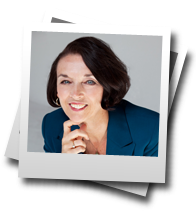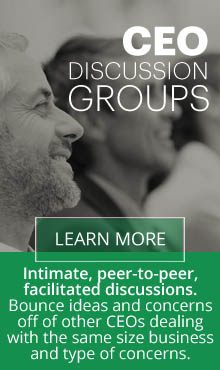You’ve sold a product or a service. You’ve calculated your cost and sold it at a profit. So the sale is profitable, right? Not so fast. Is this the first sale to this  customer? Have you calculated your customer acquisition cost? If you sold something for $100 and made $20 on the sale and your customer acquisition cost is $60, you may need to make three sales to that customer just to break even.
customer? Have you calculated your customer acquisition cost? If you sold something for $100 and made $20 on the sale and your customer acquisition cost is $60, you may need to make three sales to that customer just to break even.
So what is customer acquisition cost? It’s everything that goes into you getting customers. Here are some obvious examples: your website, media and print advertising, the salaries of your marketing staff, the salaries and commission of the sales team, business cards, brochures and letterhead, gifts that you buy to give to customers, dues and fees to go to events and association meetings where you find your customers, lists that you buy to get new customers, the costs associated with your newsletter.
Here are some less obvious costs: You brand yourself in a particular way through having a clean and sophisticated office, special shirts or uniforms for your workers, your name painted on your vehicles, the music and ease of use of your phone system, the portion of your receptionist’s salary that greets customers, and any other things that create your brand awareness. The point of having a brand is to attract customers so these costs should be included as well. And if you’re the decision maker, you’re using some of your time to focus on customer strategies, niches, problems, sales people issues, etc. So allocate some of the cost of your time, too.
This is the whole point of customer loyalty. If you spend all this money to get a customer and he’s a one-and-done single transaction, you’ve lost a lot of money. If, however, that customer becomes a raving fan, he repeatedly buys your product or service and you can start making money from him. If he then refers other people to buy your product or service, you’ve made more money from him and your customer acquisition costs can be decreased.
So how do you achieve greater customer loyalty? The experts and the research say personal points of connection occur at every point where someone from your organization interacts with a customer. Making that customer feel respected, unique and special, showing empathy, defusing stressful situations and turning that energy into something positive are all ways to build customer loyalty. Whether the buyer is buying a candy bar in a drug store or a multi- million dollar contract, personal connection keeps the customer coming back. That is the ultimate customer loyalty test. Does s/he come back?
I encourage you to:
- Decide on a past time frame, most likely the last 6-12 months, so you can establish your company’s metrics. You can pull these numbers from your accounting system.
- Make a list of all your obvious and not-so-obvious customer acquisition costs,
- Divide the total of your costs by the number of new customers generated during that time frame. That will give you your acquisition cost per customer.
- Calculate your average sale and your average profit.
- How many times do you need to earn that profit before you’ve covered the acquisition cost for that customer? (Divide the cost per customer by the profit per sale.)
- Show this to your sales team to make sure they know when that customer starts becoming profitable to the business.
- Show that to your product/service fulfillment team so they know how many times that customer has to keep coming back just to break even on the customer acquisition cost and before the profit starts to pay their salaries.
- Provide customer loyalty development workshops to focus you and all your staff on effective points of connection, handling stress, handling unhappy customers, being positive, and the importance of internal and external customer loyalty.
- Recalculate every year and track your progress with each customer, and as a total business.
Implementing these steps and actions should help you create a business structure that is profitable and rewarding for the long term. Please feel free to contact me to discuss these strategies and other solutions you can implement in your business.

 Jeri Quinn from Driving Improved Results is an executive coach, management consultant, speaker and author who focuses on communication in her work with executives and companies. She is the author of The Customer Loyalty Playbook, 12 Game Strategies to Drive Improved Results in Your Business. With more than 40 years as a serial entrepreneur.
Jeri Quinn from Driving Improved Results is an executive coach, management consultant, speaker and author who focuses on communication in her work with executives and companies. She is the author of The Customer Loyalty Playbook, 12 Game Strategies to Drive Improved Results in Your Business. With more than 40 years as a serial entrepreneur.

